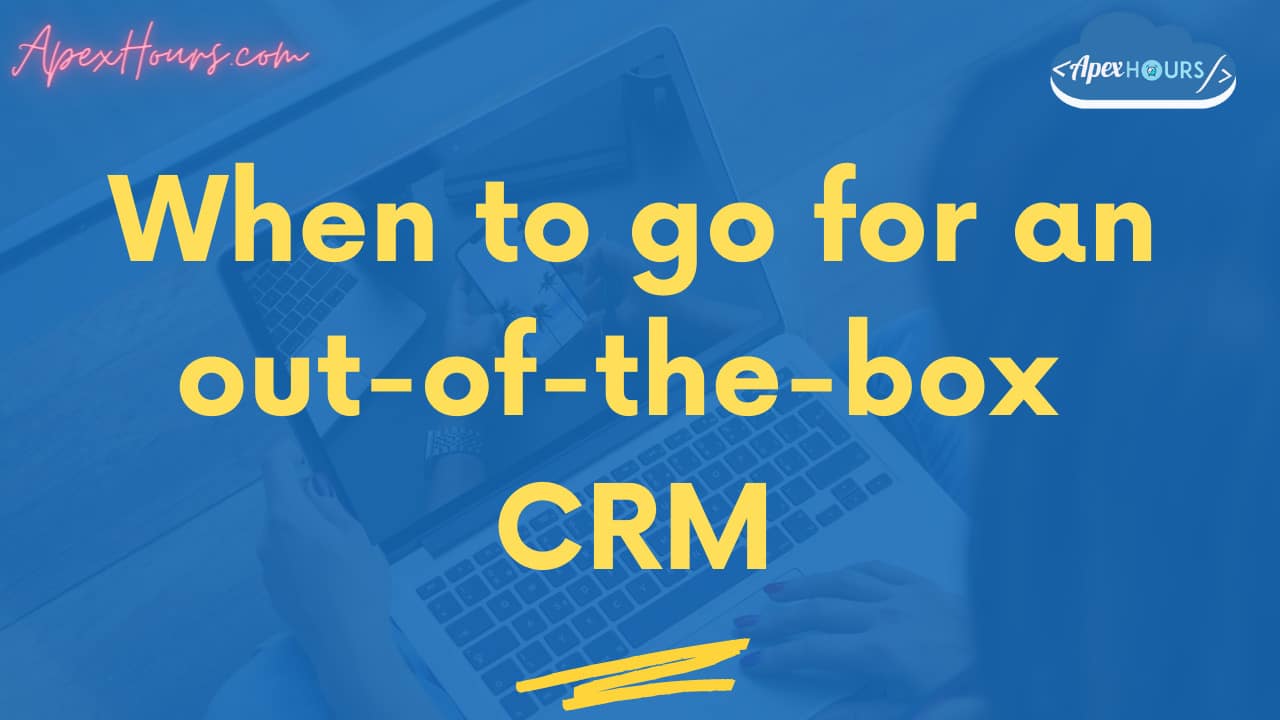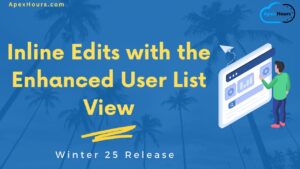This is best practice to choosing an OOTB CRM solution for your company. They’re on the market for a reason: Because they work as per most of the business requirement and it provide out of the box customization platform to modify the CRM applications. Let see When to go for an out-of-the-box CRM.
Likewise, out-of-the-box CRMs aren’t intrinsically inferior to more open-ended options, but as with any piece of software, OOTB CRMs will perform better for companies with a specific subset of characteristics that make the best out of their buck.
Remember, the entire point of CRM software is to facilitate the management of your customers, current and future. So as long as no step is shortcutted and everything, from choosing to installation to training, is planned thoroughly, an out-of-the-box CRM software will perform as efficiently as a fully customized one should your needs fit.
So when is it enough to use an out-of-the-box system?
A CRM solution is intended to be a toolbox upon which a business owner adds the tools that best fit his trade demands. The more customers and products you have, the more tools you need — both in number and specialization. Conversely, that means that:
OOTB CRM is best suited for smaller companies
The fewer customers and products you have, the fewer tools you need — to a point where the OOTB CRM software should have almost everything you require to optimize your pipeline. Segmentation-wise, a monolithic group of customers is simpler to manage, which happens more commonly in nascent businesses.
Of course, this comes with a natural dilemma: You want your company to grow. In growing, you may acquire new client groups which the OOTB won’t be equipped to handle. How to proceed? Most of the CRM application provided the configuration option to achieve your requirement,
The best OOTB CRM can be scaled
There’s nothing wrong with switching CRMs after your business grows, but it’s an expensive and time-consuming process. Instead, you can reduce the impact by future-proofing your present choices: What are my projections for the next five-to-ten years? Which way am I willing to scale towards? And how fast?
Answering those questions will let you know if your OOTB CRM will have the features to support you in the future. If it doesn’t and it seems likely you’d have to go under a major CRM software overhaul once you start scaling, it might be better to consider another option — that includes another, more robust OOTB CRM.
Which short-term limitations should I be wary about?
Even if your company is currently a perfect fit for an OOTB CRM, it doesn’t mean you can just buy it, install it, and go to town. A piece of software is only as useful as what whoever is using it takes out of it. So, not only it’s (very) important to train your sales team to the new system, but also to properly configure the CRM tool to understand your business priorities.
This means teaching your new CRM all about your important metrics, processes, and goals so that it understands the critical data it needs to report back. None of this will happen automatically, no matter the CRM chosen — it has to be done manually, OOTB or not.
When in doubt, don’t hesitate to contact specialized CRM implementation vendors — even for OOTB CRMs. Qualified partners will take care of every aspect of a CRM configuration, including user training and maintenance, to ensure reduced migraine levels.
Can I customize my OOTB CRM solution if I want to?
Usually yes, but with limitations. Take Salesforce for example — Sales Cloud’s Essential license, despite not being deliberately marketed as one, is pretty much an OOTB CRM. But despite its effectiveness, it comes with only the most basic features of the Sales Cloud environment including a 10-cap on users. Some other features you might want can only be unlocked by upgrading the license, at which point it’s not really an OOTB CRM anymore.
The trade-off you get with a custom-made CRM is a unique product that is fully optimized for your business needs, however quirky they might be. New features can be easily added, scaling is future-proofed by design, and you have the freedom to decide minutiae with your chosen seller.
What should I take away from this?
No one understands your business, and its necessities, better than you do. Maybe you recognize an off-the-shelf CRM wouldn’t be the best option, but you’re afraid of losing on opportunity costs and need a solution ASAP. Maybe you don’t feel comfortable with establishing ambitious goals in this unstable world we currently live in, and investing in a custom-made CRM would be a risky proposition.
If you feel unsure about how to proceed, the best suggestion we could offer is to seek expert advice and customize your CRM application using OOB customization tool. There are plenty of experienced partners specialized in studying your businesses and plotting up the best way forward.
Author Name : Alex Skomyanov – Alex is a Senior technical consultant and delivery manager at iTechArt. With five years of experience in rolling out successful Salesforce projects, he has deep knowledge in sales and marketing automation, as well as translating complex business requirements into high-performance Salesforce solutions




